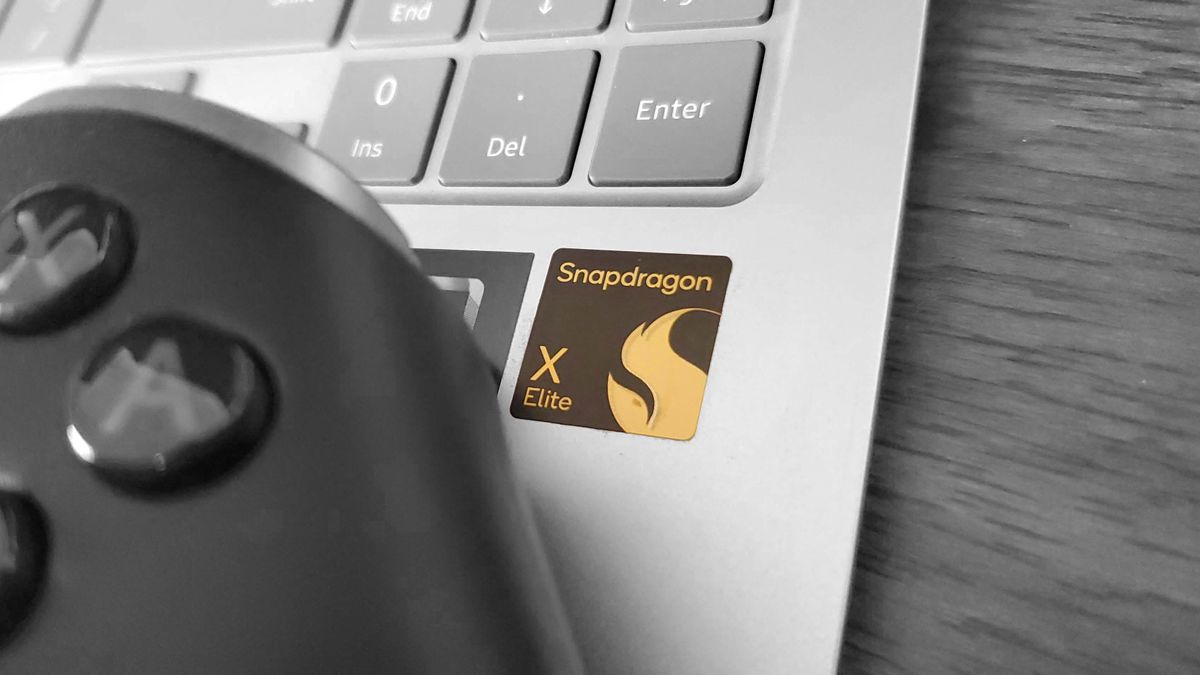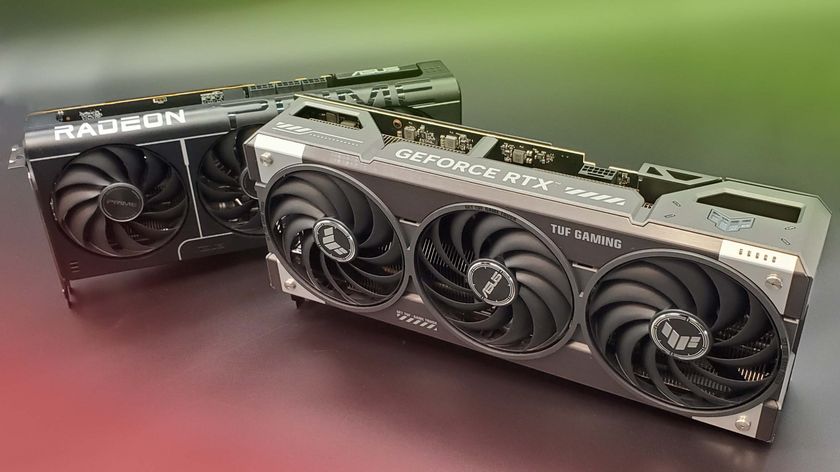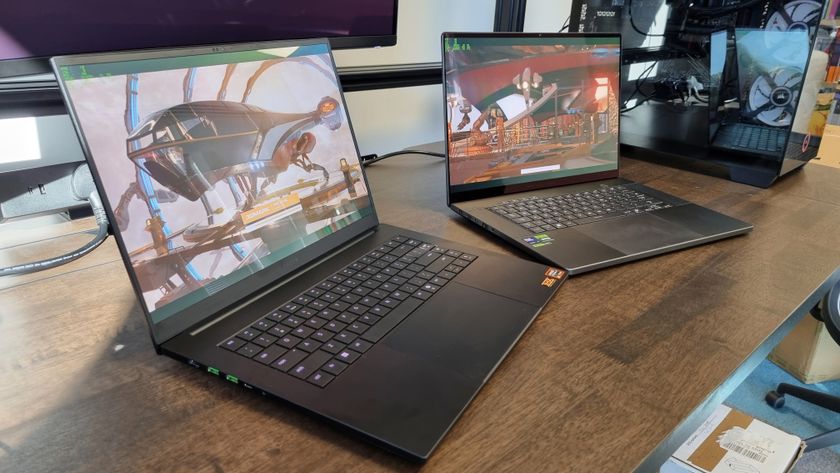Eight months into the brave new world of Windows on ARM, and this is the state of play for PC gaming outside of the x86 arena
Qualcomm was serious in its gaming ambitions for the Snapdragon X Elite, so what does that look like half a year down the line?

For years, we PC gamers have had it easy. No, really. Not quite as easy as console users, perhaps, but we could be reasonably sure that any software we tried to run was written for the processor architecture inside our box. And that's because there was only one: x86, as championed by Intel and AMD. Companies like Cyrix, VIA and even Fujitsu have produced x86 chips too, but when it comes down to home-use gaming PCs in the 21st century, there have only been two horses in this town.
Then Qualcomm came along and ruined everything. Or possibly changed everything, potentially for the better. The ARM-based Snapdragon chips were released in June last year and have sparked a debate over whether x86 is dead, but there's a more pressing question fizzing in the brains of those for whom a controller is a more pressing concern than a spreadsheet: are Snapdragon chips any good for gaming?
And the answer is a thumping 'well, maybe one day'. Prior to launch, Qualcomm had been bizarrely bullish about the platforms PC gaming performance, with claims that native Windows games would "just work" on the Snapdragon setup. Now we're eight months down the line post-launch, how do those claims look at the start of 2025?
For a start, the Snapdragon chips that started to appear in Copilot+ PCs aren't boasting the sort of pixel-pushing prowess we've come to expect from GPUs, and no one has yet produced a PC that marries one with a separate graphics card.
Though that should be coming… eventually. Qualcomm's CEO, Cristiano Amon, has stated that he wants "Qualcomm in every PC form factor: From desktop to mini PCs, to tablets," and we've also seen Snapdragon firmware that supports Resizable BAR, a feature only used when paired with a discrete GPU.
But right now, we've only seen Snapdragon CPUs being used in laptops, and most definitely not gaming laptops. This means we're stuck with integrated graphics, and we all know how well that usually works—don't go expecting 4K or high frame rates from complex 3D games.
But that's not to say chips with integrated graphics are a complete loss. As we saw when we tried gaming on an M3-equipped MacBook Air last year, the new generation of ARM-based processors are perfectly capable of running games, in the same way that your smartphone or tablet is.
The biggest gaming news, reviews and hardware deals
Keep up to date with the most important stories and the best deals, as picked by the PC Gamer team.
What matters is that these are not dedicated gaming platforms, especially in the GPU department and, when it comes to the ARM-based chips, many games still don't have executables optimised for the new platform, relying on software translation layers to run.
With Qualcomm, however, we do have Microsoft support in the shape of Windows-on-ARM (WoA). That means we can run the Snapdragon silicon in an entirely familiar Windows environment; one that uses a compatibility layer, called Prism, to ensure wide support of applications for even those programs (and games) without native ARM support.
So, taking up a couple of recent mobile processors, we thought we'd give it a try and see what results we could get.

In one corner, we have a 14-core Core i9 13900H, which offers 96 execution units of Iris Xe graphics, backed by 32 GB of RAM. It's a common Intel integrated graphics unit for laptops, though ours is actually inside a mini desktop PC. In the other corner, a laptop featuring a Qualcomm Snapdragon X Elite X1E-78-100 with 12 Oryon cores, 16 GB of RAM, and a Qualcomm Adreno GPU that can pump out 3.8 TFLOPS if asked nicely, which theoretically should put it in the same rough performance envelope as the Xbox Series S or maybe a GTX 1060.
We're not looking at enormous rendering capabilities, but the Steam Deck does okay with less. Both machines are running Windows 11 24H2, the latest version at the time of writing.
It should be noted that every CPU core on the Snapdragon chip is the ARM equivalent of a 'P' core—the mix of P and E cores used by Intel, Apple and smartphone manufacturers hasn't made it to Snapdragon PCs yet (it probably will), so you're getting 12 full cores of processing potency at 3.4GHz. This won't matter too much for games, which have been slow to embrace multithreading, but stands out against the i9, which has more cores but a 6:8 P-to-E core ratio.
To begin with, here's a synthetic benchmark. 3DMark's Night Raid is a graphics test aimed at integrated chipsets, and so should give us an initial idea of how the two CPUs align. It spits out a combined score that's less useful than an average frame rate figure, and while the two machines' results are a bit different—with about 6,000 points between them—it does show we're operating in a broadly similar performance envelope, and they both beat a GTX 1050 Ti dedicated laptop GPU.
On to the games. It would be wrong to expect these integrated GPUs to run Cyberpunk with full ray-tracing, so to get an idea of what they're capable of we'll stick to games that we know play well with portable machines. Horizon Zero Dawn Complete Edition is a pillar of the PC Gamer testing suite, and is fully verified for the Steam Deck.
Yes, the Snapdragon's integrated GPU supports AMD's FidelityFX Super Resolution (FSR), and while Qualcomm has its own upscaling solution—Snapdragon Game Super Resolution—it's yet to be spotted in the wild, and we also haven't been able to find a list of games that support it. FSR makes a difference, though, pushing the frame rate into 'playable' territory on both CPUs, with the Core i9 coming off best.
It's known as quite a CPU-limited title, so hopefully Intel can put some of those extra cores to work, but even at its Original graphics setting it's not a bad looking game, and indeed ran on the PS4 at a low enough frame rate that our test subjects' efforts could be called a tribute act. Connect a DualShock up to your PC, and you could easily imagine you were in 2017 again.


Hitman 3, from 2021, is also Steam Deck verified and fares pretty well on low-powered graphics hardware, and so it proves here under its Medium preset. Both chips put out respectable 1080p performance, and you could probably push it to high settings and not lose much except a bit of smoothness.
What is odd, however, are the extremely low minimum frame rates that suggest some sort of glitching or stuttering. As an additional test of the hardware and the Qualcomm chip's compatibility, the Hitman test was run in both DirectX 11 and 12. The change here negatively affects the Core i9 much more than the Snapdragon, which manages a remarkably consistent performance between the two APIs, presumably because it's running a compatibility layer over the top of both.
These titles look pretty good, with Qualcomm and Intel swapping leads, and that makes it feel like things are pretty level even if the ARM-based chip is only emulating the x86 chip. But we've also run through other games in our test suite, with the latest Intel and AMD platforms as well as the most powerful of Qualcomm's processors. In games, such as Black Myth Wukong, and Metro Exodus, where Intel and AMD iGPUs can give decent low-end performance, the Snapdragon chip is completely unable to even run the game.
Both Qualcomm and Intel chips fall over in F1 24 for some reason, however, proving that even Intel cannot be entirely relied upon in the world of integrated graphics performance any more.
The kicker is that AMD's latest iGPU, the Radeon 890M in the latest APUs, is an excellent chip. It will generally outperform the latest Arc GPUs in the Intel Lunar Lake platform, and always beats Snapdragon, even in the most powerful 4.6 TFLOP chip that we're testing in the benchmarks above.
This is where things fall down for the Qualcomm chips, then. As good as the Prism emulation is, it's not fool-proof, and will not run absolutely every game or app you throw at it. We've had a great experience running a Qualcomm laptop as a daily driver for the past six months, and had no issue running various productivity and work apps on it. But when it comes to gaming, the story is a lot more hit and miss.
When it works, it's usually fine, and a lot quieter than an equivalent Intel, or even AMD setup. But when it doesn't, you're simply not going to get to play the games you might want to.
Steam is usually pretty good at giving you a heads up on how well a particular game will run on your rig, but what it doesn't tell you is whether games are natively compiled for ARM64 or running the x86 version through Microsoft's emulation engine. There are sites you can turn to in order to check Windows on ARM compatibility, and the lists are good, but not exhaustive.
As there's no native version of the Steam client app yet, the chances are that every game you're playing at the moment is x86-only. Some Mac games have versions compiled for the new M-series processors, which are ARM-based designs just like the Snapdragon, but Apple is similarly opaque about which codebase you're using as its Rosetta 2 software translation layer handles the conversion from x86.
The Snapdragon and Apple M chips also both have accommodations built into the hardware by designers who knew they were going to be asked to run x86 code. The way x86 handles memory storage is baked into the Snapdragon hardware, as is the way the Intel and AMD chips work with floating point numbers (which means anything with a decimal point in it).
ARM-based chips do things differently, but allowing them to fall back to the x86 method when asked to can take some of the workload off the emulator. As a result, Prism provides a very fast x86 emulation, though there must be some kind of processing overhead, and the Snapdragon chip won't be operating at its peak performance in our tests as a result. If you want to know more about this, there's an unnecessarily detailed deep dive into the Snapdragon architecture over at our sister site Anandtech.


ARM-native versions of games (and the Steam client) are a necessity, as eventually Prism is going to go away. Either ARM chips will become as ubiquitous as x86 is today, with Intel and AMD churning out their own designs and x86 relegated to servers or workstations that run Linux, or the two instruction sets will diverge so much that emulation becomes more difficult. The precedent for this is the way Apple ditched Rosetta 1 (which translated between the old IBM Power chips in Macs to the newfangled Intel ones) after only two revisions of its operating system. Once everything important was updated to native binaries, it was ditched from the OS.
That's far in the future for now, though—what's important to us is that Prism is completely transparent, even when launching a game from Steam, the processing overhead isn't particularly noticeable when it works, and the new chips' GPUs don't lag behind the kinds of integrated graphics we've become used to from Intel and AMD.
The issue remains, however, that you can be confident that a new game will work out of the box on Intel (mostly) and AMD-based laptops—however poorly in terms of frame rates on the low-end silicon—but the same cannot be said for ARM-based machines. The compatibility is pretty robust, but not all-pervasive.
Still, the performance is relatively impressive when it does work, and impressively quiet, too. And that compatibility is only going to improve—as are the numbers of native apps—so we still think the future for ARM-based PCs is bright, even if right now it's a tough call for a PC gamer. But, if other players get in the game alongside Qualcomm, things could start to look very different. I mean, Nvidia's surely going to release its own ARM-y CPU at some point, right?
So, all we need now are ARM-native Nvidia and AMD drivers for graphics cards, a desktop platform from Qualcomm and/or Nvidia, and PC gaming on ARM can really begin in earnest.

Ian Evenden has been doing this for far too long and should know better. The first issue of PC Gamer he read was probably issue 15, though it's a bit hazy, and there's nothing he doesn't know about tweaking interrupt requests for running Syndicate. He's worked for PC Format, Maximum PC, Edge, Creative Bloq, Gamesmaster, and anyone who'll have him. In his spare time he grows vegetables of prodigious size.

AMD is reportedly plotting an NPU-enabled 'Ryzen AI Z2 Extreme' chip for handhelds and we still can't figure out what it'll do for us aside from drain more the battery juice

G.Skill's 128 GB golden RAM kit is the first high-capacity set to hit DDR5-8000 speeds and it's making me reconsider my views on PC hardware bling










